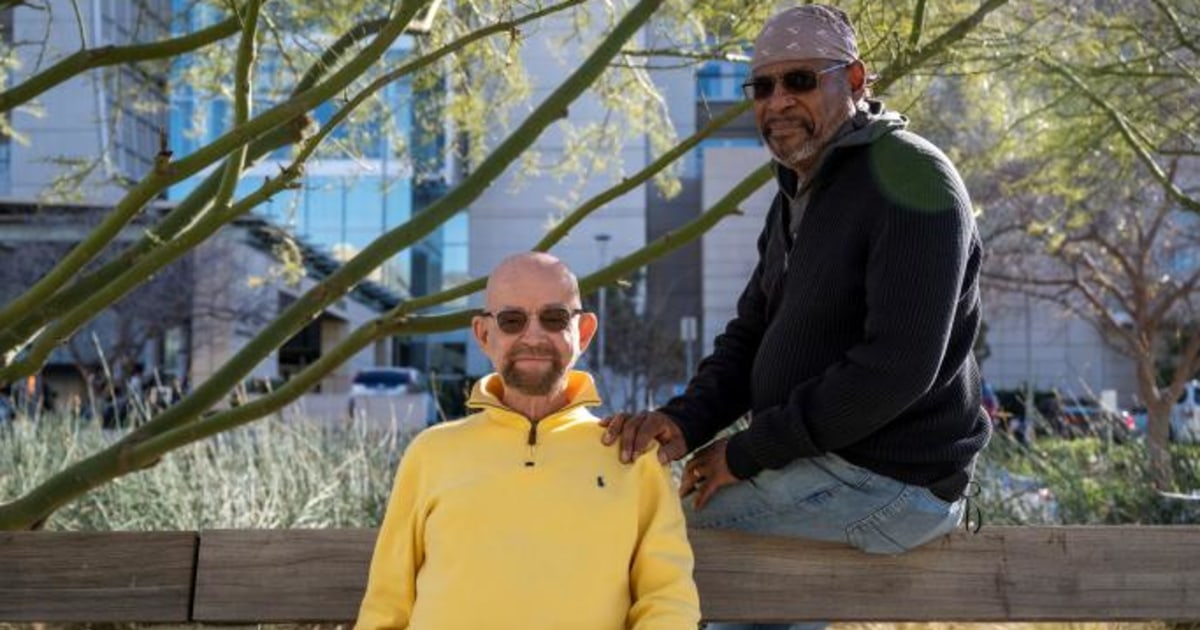Without treatment, sleeping sickness, caused by a parasite carried by the tsetse fly, is considered fatal.
The cure, however, was also a cure for one in 20 patients.
“The only treatment that existed was terrible, based on arsenic.
When people were injected with it, they suffered enormously, as if they had fire in their veins,” explains Luis Pizarro, executive director of the Drugs for Neglected Diseases Initiative (DNDi).
But science, philanthropy and entrepreneurship came together to find the remedy that would put an end to that nightmare.
They succeeded in 2009. NECT no longer killed 5% of people affected by sleeping sickness or caused as much pain, but its administration was still injectable.
"In terms of logistics, it requires a lot of effort, which was not ideal in countries like the Democratic Republic of the Congo, where the sick live in very remote areas," recalls the doctor.
They did not give up, they continued their research and a decade later they proved that fexinidazole administered in pills for 10 days was effective.
Just two months ago,
The Lancet Infectious Diseases
published its latest finding demonstrating the effectiveness of a single acoziborole pill.
“We hope to release this remedy in 2023, which will allow us to definitively end sleeping sickness,” Pizarro advances.
This could be a key factor in meeting the World Health Organization (WHO) goal of eliminating transmission by 2030 and deleting its official name —
African trypanosomiasis
— from the list of the 21 neglected tropical diseases (NTDs), of which this Monday is the world day.
This and yaws – a disfiguring and debilitating disease that affects children and is also very close to its extinction – could be the two NTDs that the new WHO roadmap hopes to eradicate by that date.
Other objectives of this plan include that 100 countries completely eliminate one of the ailments and reduce by 90% the population that requires attention for one or more.
For all this, research is the fundamental tool.
The WHO roadmap establishes that 100 countries completely eliminate one of the neglected tropical diseases and reduce by 90% the population that requires attention for one or more
They are neglected diseases because they do not receive enough attention or funding to end them, but they are not invincible.
“This is what motivates us: we fight birth inequalities.
We do not accept living in a world in which access to health is conditioned by the luck of being born or not in a country with resources”, alleges Pizarro.
A second reason for further investigation is "pragmatic," he says.
“It is a question of security;
Within these neglected diseases there are many that have the potential to become a threat.
Working on them is a way to prevent large or serious epidemics in the future.”
"They are forgotten, but not infrequent," adds Elena Sulleiro, doctor in microbiology and director of the Spanish Society of Infectious Diseases and Clinical Microbiology (SEIMC).
"More than 1,000 million people in the world suffer from one, the majority are vulnerable and impoverished populations," she recalls.
They are, therefore, unattractive for the pharmaceutical industry, which prefers to invest in drugs with guaranteed economic benefits, and for large donors or the public sector, which prioritize tackling more widespread (and well-known) ills such as malaria, tuberculosis and AIDS.
“Many are not extremely lethal, but they cause great morbidity, which affects people's quality of life.
And they occur in places where it is very difficult for patients to go to the health system and the concept of detection and screening is not internalized, so they are diagnosed when the cases are serious or have become chronic.
For companies that could investigate them, they are not a priority.
They affect a large population group, but few resources are allocated to diagnoses and treatments”, analyzes the doctor.
“Efforts are made,” she clarifies, “but more is needed;
there are still NTDs that cannot be diagnosed or there are inadequate treatments”.
This is the case of Buruli ulcer, of which the mode of transmission is unknown and there is no way to prevent it.
"It is thought that it could be stagnant water, but it is not known for sure," says Iñigo Lasa, general director of the Anesvad Foundation, which combats this and other neglected ailments in Africa.
It is known to be caused by a mycobacterium from the same family as tuberculosis and leprosy.
It is detected when the symptoms appear: at first a painless swelling, sometimes in the form of a nodule, plaque or inflammation on the legs, arms or face, which in four weeks transforms into ulcers that can affect the bone and cause deformities.
Buruli is one of the diseases considered forgotten among the neglected, which affects the skin and requires intensive treatment,
The neglected diseases receiving the most attention are those preventable or curable with a pill, as donors can measure the impact of their funds in number of pills administered
Of the slim attention-grabbing pie that 21 NTDs attract, the biggest slice goes to those that are preventable or curable with a pill, favored best by donors who can measure the impact of their funds in number of pills administered, he says. lasa.
Buruli has treatment: a combination of antibiotics (rifampicin and clarithromycin) for eight weeks, whose administration requires hospitalization.
Although in many of the 33 endemic countries it is free, the usual situation of poverty of those affected prevents them from paying for transportation, lodging and food to go to and stay in the hospital, which means, in addition to an unaffordable expense, the loss income when you stop working.
The alternative is disability.
Through two international research consortia in Côte d'Ivoire, Ghana, Togo and Benin, Anesvad is driving the design of an effective four-week treatment.
“We are talking about cutting the healing time in half, which reduces the costs of medication,” Lasa details.
It also means less expenses related to hospitalization, travel and care for people with Buruli ulcer.
With an investment of almost two million euros, they have been in the clinical trial phase for more than a year.
Afterwards, there will be the analysis of the results and, finally, their publication in a scientific journal that validates the findings.
“And the final step is for the WHO, once you have demonstrated its efficacy, to approve it as part of the treatment protocol.
This takes a long time."
An illuminating example of the high cost required for research into one of these ailments is offered by venomous snakebite, the last one included by the WHO on the list of neglected diseases, in 2017. The low demand for existing antidotes for the The poisoning of certain species has led several manufacturers to stop production, and the price of some of them has increased dramatically in the last 20 years, "making the treatment unaffordable for most people who need it," indicates the organism.
One solution would be to obtain an antidote for many or all of the poisons, so that their production would be profitable.
“To obtain a universal antivenin, a study of at least 100 million euros is required to monitor the affected people.
And the chances of future success are between 10% and 20%.
In other words, few”, develops Lasa.
For this reason, although it is one of the NTDs that kills the most and causes the most disability -2.7 million people suffer an attack each year, of whom more than 100,000 die and some 400,000 are left with serious sequelae-, "only one or two centers are looking for a remedy”.
In summary, the research teams are not interested in this ailment due to a lack of prospects for success and opt for others with a greater guarantee of success.
Research appropriate to the environment, on the context and in endemic countries
For Sulleiro, it is important that research not only focus on inventing new preventive and therapeutic drugs, but also on improving diagnostic techniques and ways of administering treatments to "adapt them to the environment" in which they will have to be used.
"The machine that I have in my laboratory to diagnose Chagas disease is impossible to take to the Bolivian highlands, where the disease is endemic," explains the specialist from the Tropical Medicine and International Health Unit at the Vall d'Hebron Hospital in Barcelona.
“This is one of the efforts that must be made, for example, designing equipment that requires less maintenance, reagents that can be more easily conserved,” she says.
Chagas disease is a parasitic disease that is transmitted by the bite of a bedbug, but it is also transmitted by blood transfusion and from mother to child during pregnancy.
The latter can be easily controlled if diagnosed in women of childbearing age, as it is almost 100% curable if treated in its early stages.
But still, in 21 countries in the Americas, 30,000 new cases are registered each year, 12,000 deaths on average, and 8,600 newborns are infected during pregnancy.
“Rapid tests such as those for covid or a pregnancy test have to be developed, and are being done, in order to diagnose the disease and, consequently, have access to treatment,” suggests Sulleiro.
Such a technology, transportable in a briefcase, would facilitate the detection of the ailment in remote areas in which to carry,
“Chagas disease does not cause symptoms for years, but when they appear, we are late.
Patients no longer need to just kill the parasite, but perhaps require a heart transplant or bowel surgery”, the specialist stresses the importance of early diagnosis.
Íñigo Lasa agrees with this analysis.
“PCR techniques must be improved for certain ailments.
Just as it has been done with the covid and the flu.
It is a demand of the health personnel ”.
And he adds the importance of supporting research in endemic countries.
“This year we will open a call for young African scientists who study neglected tropical diseases, so that their proposals go forward with the best guarantees”, he announces.
Finally, the general director of Anesvad underlines the need for a sociological study of NTDs, that is, to know how diseases, especially those of the skin that can cause disabilities, impact people's lives.
Again, the case of the Buruli ulcer is useful, whose skin damage —if not treated in the first phase— can cause amputations.
"So even if the patient is cured and the disease stops devouring him, he will need rehabilitation," explains Lasa.
And not just physically.
Will he get a job?
How will the stigma affect you?
Social research on the impact of NTDs needs to be deepened.
Health problems are dealt with by the health sector.
But when they heal them, they are no longer your responsibility.
But they still need to improve their quality of life, a social and labor rehabilitation.
We have to know if, with the projects, we change people's lives beyond if we cure them ”, he settles.
"We will check with the University of Liverpool."
Listen here to the complete interview with Luis Pizarro, executive director of the Drugs for Neglected Diseases Initiative (DNDi), in collaboration with Salud por derecho and the Anesvad foundation.
You can follow PLANETA FUTURO on
,
and
, and subscribe
here
to our 'newsletter'
.








